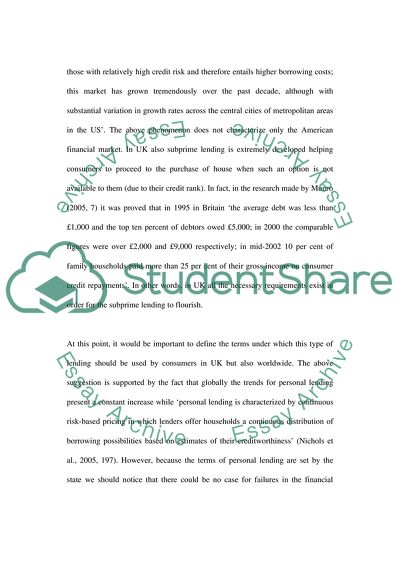Cite this document
(Subprime Lending, its Adverse Effects on UK and World Financial Market Research Proposal - 6, n.d.)
Subprime Lending, its Adverse Effects on UK and World Financial Market Research Proposal - 6. https://studentshare.org/finance-accounting/1711126-research-proposal
Subprime Lending, its Adverse Effects on UK and World Financial Market Research Proposal - 6. https://studentshare.org/finance-accounting/1711126-research-proposal
(Subprime Lending, Its Adverse Effects on UK and World Financial Market Research Proposal - 6)
Subprime Lending, Its Adverse Effects on UK and World Financial Market Research Proposal - 6. https://studentshare.org/finance-accounting/1711126-research-proposal.
Subprime Lending, Its Adverse Effects on UK and World Financial Market Research Proposal - 6. https://studentshare.org/finance-accounting/1711126-research-proposal.
“Subprime Lending, Its Adverse Effects on UK and World Financial Market Research Proposal - 6”. https://studentshare.org/finance-accounting/1711126-research-proposal.


